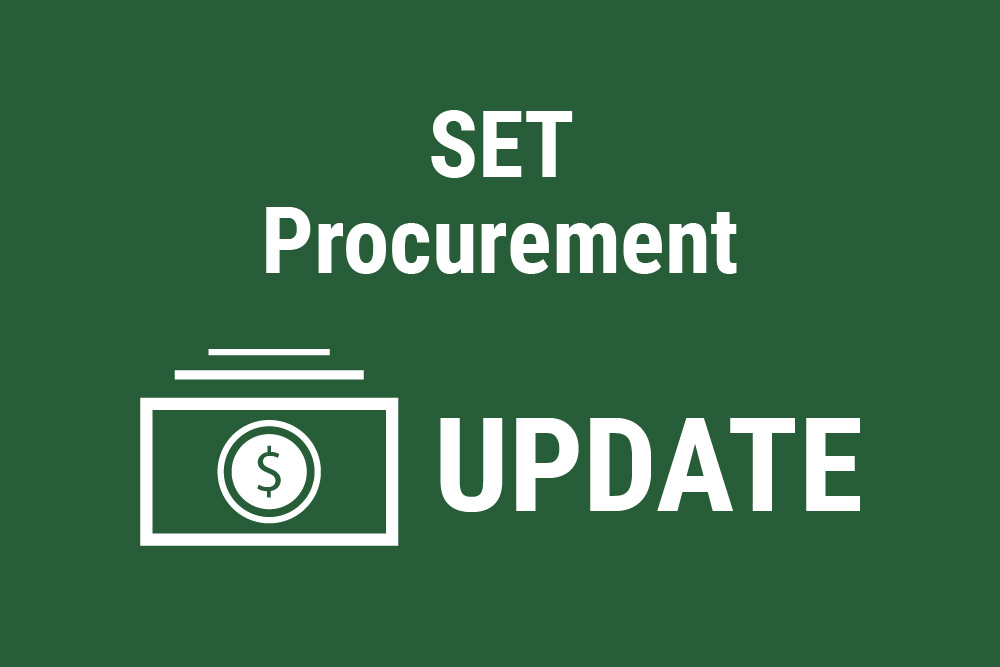Procurement tasked with finding $29 million in savings
Todd Gilchrist - 25 March 2021

Hello Colleagues,
With administrative restructuring well underway, our next step in achieving financial stability is to review and redesign the expenditure strategy for goods and services across the university through procurement.
The university’s Procurement team is responsible for the purchase of goods and services, contract management, vendor management, customs services, travel management and compliance.
What we’ve completed
The Procurement team identified a number of practices and processes we could improve, then validated these findings with a third-party review from KPMG. The reviews included the following recommendations:
- Increasing compliance with procurement policies and procedures
- Negotiating and receiving competitive pricing
- Reducing duplicated procurement activities
- Reduce purchasing demand
Why these changes are vital
Every dollar we save in procurement and duplicated administrative activities is one dollar less that will need to come from labour savings through layoffs and staff reductions. To minimize the impact on our labour force, we must commit to completing procurement activities differently.
How we can achieve savings
The university has guidelines, processes and procedures in place for procurement, travel and hospitality. With our current organizational model, exception processes and workarounds have been accepted in procurement. For example, you may prefer to work with suppliers or contractors you’re familiar with, rather than using preferred suppliers we have agreements with or following the Contracting for Services Procedure. Workarounds like these have led to extraordinary spending and inconsistent practices.
To achieve the savings we need, it is critical that the entire university community changes its approach to procurement to benefit the university now and into the future. To accomplish this, the Procurement team is redesigning guidelines, processes and procedures as part of the Service Excellence Transformation (SET). We are committed to streamlining processes, and making them easy to follow and understand. We also need leaders, faculty and staff to commit to following these shared guidelines and prevent the development of future workarounds.
In addition, a more centralized administrative model will allow us to correct inefficiencies and improve the speed of communication and decision-making. For example, nearly 300 people currently play a role in the review of travel, expense and PER expense claims which includes reviewing line item details, attaching physical receipts and overseeing claims. This duplication of effort needs to be reduced across the institution. In the future, some of this work will move to central review, which will streamline processes and reduce costs by minimizing the administrative requirements in faculties and departments, and ultimately reduce our administrative and infrastructure spend.
One of SET’s main objectives is to continue to provide high-quality services with fewer staff members. And though fewer people will complete transactional activities, more centralized activities will allow us to leverage expertise, reduce redundancies and increase collaboration. Faculties and units will receive specialized support in a new culture of service excellence.
Lastly, the pandemic has afforded us significant cost savings in travel and procurement. Our senior executives have agreed to lead by example to maintain the momentum of these savings after the pandemic by adjusting travel and procurement spending in their areas.
Where we’re at
The Procurement team is tasked with finding $29 million in savings.
We’ve identified 26 initiatives to help achieve up to $9 million in annual savings by March 31, 2023. These recommendations have gone to the Service Excellence Steering Committee and PEC-S for input and consideration.
In addition, $8.5 million has been identified and reduced already through:
- building cleaning service levels
- library journal subscriptions
- IT maintenance service
- renegotiated internet service costs
- job advertising service
- office supplies
- electrical and lighting supplies
- printing costs
The Procurement team is working on a proposal to address the remaining $11 million.
We’ve set up a Procurement SET web page to share upcoming initiatives, timelines, savings and progress with you. For many of the initiatives, faculty and staff will be invited to share their ideas for the best ways to implement them.
What comes next
- Ongoing updates about activities, progress and milestones
- Details about the initiatives, including key stakeholders, timelines and cost savings opportunities
- Invitations for faculty and staff to share their thoughts, concerns and ideas about upcoming projects
- Direction on initiatives that require senior executive approval
- Implementation of projects in progress
Questions?
If you have a question or suggestion about procurement, processes, travel or supplier management, use the Feedback for Procurement Form.
Thank you in advance for your commitment to helping us incorporate these savings opportunities into our work.
Todd Gilchrist
Vice President (University Services and Finance)
Chair, Service Excellence Steering Committee (SESC)